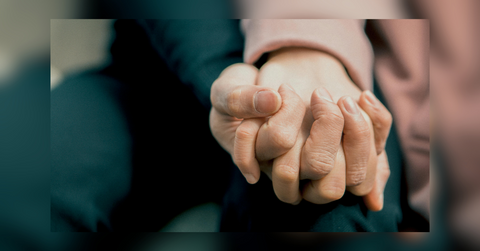 NEWS
NEWSFrom Hollywood to Real Life: The Rise of Age-Gap Romance

June 26 2025, Published 1:39 a.m. ET
While not entirely new, age-gap relationships are receiving a brighter light of attention and acceptance. High-profile age-gap relationships include Sarah Paulson and Holland Taylor, George and Amal Clooney, Blake Lively and Ryan Reynolds, and Gigi Hadid and Bradley Cooper. These relationships were once strongly disapproved of, with societal expectations placing more value on reproductive roles and economic situations rather than genuine connections. However, as these expectations have continued to shift throughout the years, age-gap relationships offer a powerful real-life example of how meaningful love can transcend the societal norms one may feel confined to.
Thanks to websites like Seeking.com, people can connect with like-minded individuals and build romantic connections that meet both partners’ needs.
What are Age-Gap Relationships
There are slightly different interpretations of what defines an age-gap relationship, but a simple definition is that age-gap relationships are typically between two individuals who are roughly 10 years (or more) apart in age. While the older man courting a younger female isn’t unfamiliar to many people, there have been both older men and women who have enjoyed an age-gap relationship.
Recent studies have shown that some men and women prefer age-gap relationships; however, the timeline in which they may seek an age-gap relationship differs. One example is that, as men age, they tend to prefer increasingly larger age gaps between themselves and their partners. On the other hand, women initially prefer slightly older men, but as they age, they prefer men closer to the same age until reaching around age 60, when they are more likely to prefer a younger man.
Want OK! each day? Sign up here!
The Cultural Normalization of Age-Gap Love
Pop culture and high-profile, age-gap relationships have contributed to the softening of old stigmas and the shift in societal expectations that previously classified age-gap romances as distasteful. With shows like The White Lotus, an HBO miniseries that explored the complexities of human behavior, large age-gap relationships have become more mainstream.
Generational attitudes are also shifting, with younger people today prioritizing emotional maturity, lifestyle alignment, and shared values over the age of their partners. This can be seen in younger women, who have grown more confident in vocalizing what they are looking for and are unafraid of seeking out partners who meet their needs. Yet, while there has been more cultural normalization around age-gap relationships, older women do still receive more criticism and pushback when dating a younger man.
Co-CEOs of the luxury dating site, Seeking.com, Dana Rosewall and Brandon Wade, have built a relationship that defies traditional societal expectations. Dana embodies a growing mindset, one defined by clarity of purpose, a drive for success, and a refusal to compromise on emotional well-being. Similarly, Brandon’s emotional openness challenges traditional norms of masculinity, fostering a relationship rooted in mutual respect, support, and true partnership.
Regarding age-gap relationships, Brandon Wade believes that “[p]ublic perception of age-gap relationships, especially in Hollywood, has shifted noticeably in recent years. Historically, such relationships often reflected broader cultural norms and were occasionally glamorized, particularly older male celebrities dating younger female partners. Today, however, significant age differences typically provoke skepticism, concern, or judgment. Society increasingly questions whether these relationships truly reflect equality and emotional maturity.”
“My wife Dana and I, who met on Seeking.com and share a 30-year age difference, have personally observed how initial skepticism can evolve into acceptance once people understand the depth and sincerity of our bond. This change in perception underscores a societal shift: people now prioritize the substance of a relationship over the superficiality of age alone,” Wade says.
Looking Forward: Love Beyond Numbers
As society continues to evolve, so too does the way people understand and experience love. Age-gap relationships, once considered taboo or laden with suspicion, are increasingly recognized for what they truly can be—deep, mutually fulfilling partnerships based on trust, emotional resonance, and aligned life values.
In a culture that is slowly dismantling rigid expectations around gender roles, family structures, and romantic ideals, stories like Dana and Brandon’s offer a refreshing counter-narrative: one where love is not defined by age, but by emotional compatibility, mutual respect, and shared growth. Their journey does not only show what is possible, but might also signal where people are headed—a world in which connection takes precedence over convention.
In the end, age-gap relationships aren’t about proving anything to society. They are about two people choosing one another—fully, authentically, and courageously—regardless of the number on their birth certificates. And as long as that love is real, grounded, and reciprocal, whether in a film or in real life, it deserves to be seen, respected, and celebrated.


